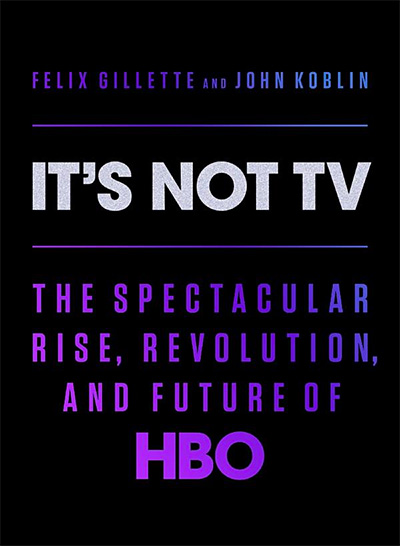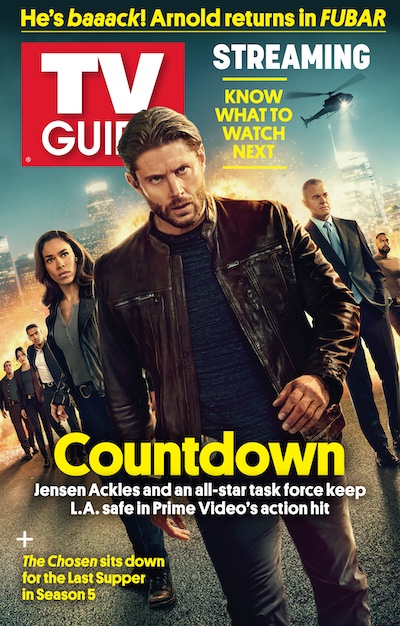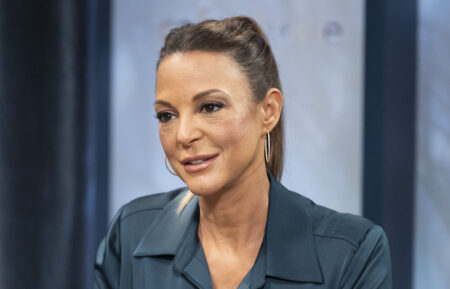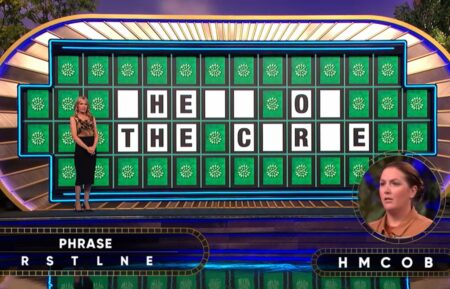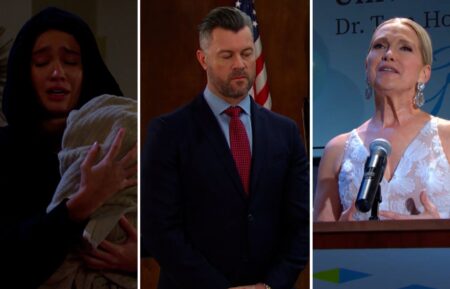Top 10 Most Crucial Decisions in HBO’s 50-Year History
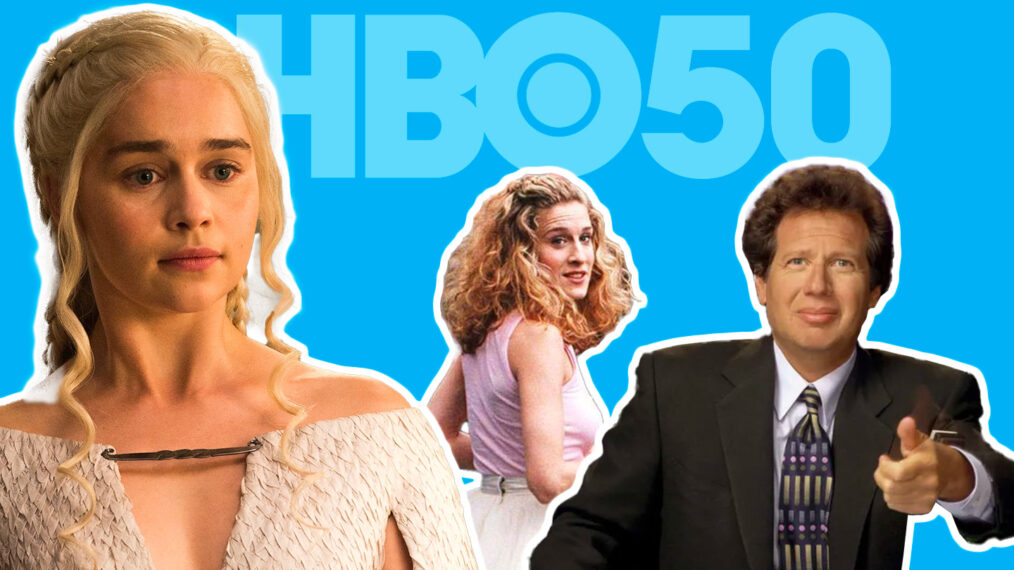
It’s hard to believe but HBO turns 50 years young this month. To celebrate the half-century milestone, TV Insider selected our 50 Best HBO Shows list, and asked Felix Gillette and John Koblin, authors of It’s Not TV: The Spectacular Rise, Revolution, and Future of HBO, for a list of the Top 10 Most Crucial Decisions in HBO History.
1) Jumping on satellite first
For the first two years after launching in 1972, HBO was boxed in by the messy, fragmented landscape of cable TV. Then in December 1974, HBO executives had an idea. The telecom giant RCA was scheduled to launch a commercial satellite into orbit that was capable of transmitting moving pictures. In a flurry of meetings, the HBO execs convinced their corporate bosses to invest $7.5 million to rent space on RCA’s “bird” for the next six years. The board begrudgingly conceded.
Afterwards, thanks to the satellite distribution, HBO became the first TV network that could beam its shows simultaneously to cable system providers across the country. Subscribers swelled. Other networks, like USA, CNN, MTV, and ESPN raced to follow HBO into space. But as the cable era took flight, it was HBO that assumed the lead position.
2) Turning the villains into the protagonists.
From its inception, HBO’s original film department made a bunch of uplifting movies about men of high moral character, including biopics of Nelson Mandela, Edward R. Murrow, and Simon Wiesenthal. With time, however, HBO’s choice of historic figures grew more violent and misanthropic. “In the beginning, I wanted to make movies about heroes,” said Michael Fuchs, HBO’s then-CEO. “We ran out of heroes very quickly. We started doing villains.” HBO subscribers reacted favorably to the darker material. In the years to come, menacing, complicated figures would fill HBO’s lineup from movies (Stalin) to documentaries (Richard “The Iceman’” Kuklinski) to sports (Mike Tyson) to drama (Tony Soprano).
3) Giving airtime to Garry Shandling
In 1992, HBO began airing The Larry Sanders Show, a satire of a late-night talk show, starring comedian Garry Shandling as a thin-skinned, egomaniacal host and the actor Jeffrey Tambor as his dopey sidekick, Hank. From the start, HBO subscribers showed minimal interest. But critics loved it. The influence of the series — its improvisational air, naturalistic acting, and its strong conviction that the office place is the grating, inescapable center of the modern universe — would have a far reaching impact on American television, serving as inspiration for the next generation of workplace comedies like The Office, Parks and Recreation, and 30 Rock. The warm reception from reviewers also proved to HBO executives that the network could make critically beloved original series.
4) Prioritizing recurring series over one-off specials
HBO’s original mission was to allow paying customers to watch novel performances at home — movies, concerts, sports — that had previously required buying a ticket and trekking out to a public venue. Thus the name: the Home Box Office. The bigger the spectacle, the better, from Dolly Parton live in concert in London, to Michael Jackson in Bucharest, to Jerry Seinfeld on Broadway.
But by the 1990s there was a growing realization inside the network that any one-time product, no matter how buzzy, was an inefficient way to attract and retain subscribers. Series, not specials, they decided, were the key to the network’s future. Though HBO would never completely abandon big events, the network’s focus shifted dramatically.
5) Realizing that women watch television
During its formative years, key HBO executives decided that in order to differentiate the premium cable TV network from what customers could see for free on broadcast TV, they’d cater to a particular demographic–namely men. It was men, the HBO execs believed, who controlled the remote control, men who paid the cable bill. And so, HBO loaded up on programming designed to keep male customers happy: boxing matches, raunchy late-night documentaries, and “adult sitcoms,” featuring plenty of “cable edge” (the network’s code word for female nudity).
But then in 1996, HBO premiered a new original movie called If These Walls Could Talk, created by and starring Demi Moore, about abortion rights in America. When the film aired, it turned out to be the highest rated ever for an HBO original production. The enthusiastic reaction from viewers floored HBO executives. Perhaps the network’s core constituency could be broader? Afterward, HBO urgently searched for some original programming that would appeal specifically to female viewers. As a result, just eight weeks after the premiere of If These Walls Could Talk, HBO signed a deal for Sex and the City.
6) Casting James Gandolfini as Tony Soprano
Tony Soprano is the most famous character in HBO’s history thanks in large part to the astounding work of the actor James Gandolfini. But Gandolfini almost didn’t get the role. During the initial casting process, David Chase, the creator of The Sopranos, was intrigued by Steven Van Zandt, the scowly guitarist of Bruce Springsteen’s E Street Band who would end up playing Soprano’s colleague, the strip club proprietor Silvio Dante. Others involved in the casting process, however, were pushing for Gandolfini, who’d previously spent his limited time onscreen playing supporting roles as goons and henchmen, including small parts in True Romance and Get Shorty.
During Gandolfini’s audition, things did not go smoothly. For whatever reason — nerves, or self-sabotage, or indecision — Gandolfini kept flaking out in front of Chase. Eventually, after several misfires, something clicked. “When he finally settled down and really did a reading, it was just obvious,” Chase says. “He was the guy.”
7) Opting not to buy a young tech company called Netflix
In 2006, a group of executives in HBO’s Los Angeles office had an idea. Clearly, HBO should buy Netflix. On paper, the acquisition made perfect sense. HBO was the dominant player in delivering popular movies, ad-free, over cable and satellite, while Netflix remained the market leader in DVDs selected via the internet and distributed by mail. Eventually, a team of west coast executives went to New York to present the idea to their bosses. But before they could even finish the presentation, they were cut off. The east coast executives were not impressed. Netflix, they believed, was a flash in the pan. Oops.
8) Greenlighting Game of Thrones despite a disastrous pilot
For the original pilot episode of Game of Thrones, HBO shelled out some $10 million, more than double what most networks paid for drama series. But when the creators turned in the resulting pilot, it was terrible — a convoluted, off-putting mess. HBO’s then-CEO Richard Plepler considered pulling the plug. HBO could cut its losses. But for Plepler, there was an important principle involved. The key to HBO’s fortunes, he believed, was identifying talented singular artists and doing everything you could to support them. He still believed in the creators of Game of Thrones.
After some consideration, Plepler decided to give them a second chance. It was a wise decision. Following their stay of execution, the Game of Thrones team would reshoot the pilot – then go on to create the most popular series in HBO’s history.
9) Cleaning out HBO’s clogged pipeline
In 2016, with the network struggling to find a new hit drama, HBO named Casey Bloys as the network’s new president of programming. At the time, HBO’s all-important development pipeline had become overgrown with big-name producers and overly rich ideas that were going nowhere. HBO would sign them up and then not make their shows. Bloys believed his peers in drama had grown so worried that hit series were appearing on other networks that they had begun falling victim to “defensive buying.” Talent relations were fraying as a result. One of Bloys first moves was to clear out the logjam. He polled colleagues and raised a question: What are we actually going to make? Afterward, Bloys released hundreds of scripts out of development purgatory, much to the delight of writers, producers, and agents.
It was the start of what would emerge as a great run of original programming under Bloys’ guidance. By the time of the 2022 Emmy Awards, with Bloys at the helm, the network was back on top with HBO Max taking home more awards (38) than any other service and trouncing its rivals at Netflix (26).
10) Making sure Jesse Armstrong (and Succession) didn’t walk out the door
When Jesse Armstrong first came up with his idea for the series Succession, he and his agents planned to sell it to someone other than HBO – anyone other than HBO, really. At the time, Armstrong was frustrated with HBO, which had acquired his previous idea, a geopolitical buddy comedy, and then let it die ignominiously in development.
At the last minute, Richard Plepler, the then-head of HBO, caught wind that Armstrong was about to pitch his idea for Succession to other networks and intervened. Plepler called his programming team and Casey Bloys hastily arranged a meeting with Armstrong. At the time, NBC was airing This Is Us, a popular, heart-jerking family drama. Bloys was on the lookout for something in a similar vein only with a vicious HBO spin. Armstrong proceeded to write a script, and HBO picked it up. From there, the series would emerge as its most critically acclaimed drama since Game of Thrones.
From TV Guide Magazine
How 'Countdown' Recruited Jensen Ackles to Go Full 'Die Hard'
Countdown boss Derek Haas talks creating the character around Ackles, and the cast teases the “Avengers”-like team of the crime thriller. Read the story now on TV Insider.

